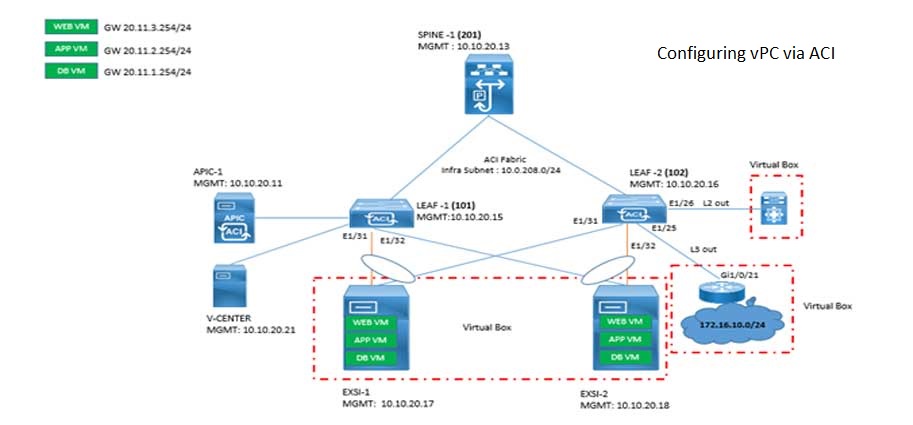
1.3.a Physical Interface and Cabling Types
1. Single-mode Fiber
Single-mode fiber uses a smaller core size (typically 9/125 microns) and a laser as the light source. It provides a single transmission path for light signals. A laser-based transmitter sends light at a single angle hence the name single-mode.
Cabling Type: Single-mode fiber cables are typically color-coded yellow. They are designed for long-distance communication, offering high bandwidth and low signal attenuation over extended distances. Single-mode fiber is used for backbone networks, and data centers requiring high-speed, long-distance connectivity. Here is the picture of single-mode fiber wherein one end is LC, and the other end is SC.

2. Multimode Fiber
Multimode fiber has a larger core size (commonly 50/125 or 62.5/125 microns) and uses either LED or laser light sources. It allows multiple light paths to propagate simultaneously. Cladding reflects the light back into the core as it travels through the core.
Cabling Type: Multimode fiber cables are typically color-coded orange. They are suitable for short to medium distances and provide lower cost solutions compared to single-mode fiber. Multimode fiber is commonly used in LAN environments, data centers, and campus networks where high-speed connectivity within a limited distance is required. Here is the picture of multi-mode fiber wherein one end is LC, and the other end is SC.

3. Copper
Copper interfaces use electrical signals transmitted through copper wires or twisted-pair cables.
Cabling Type: Copper cabling includes various types such as
✓ Category 5e (Cat5e)
✓ Category 6 (Cat6)
✓ Category 6a (Cat6a)
These cables consist of twisted pairs of copper wires enclosed in a protective jacket. Copper cabling is commonly used for Ethernet connections within shorter distances, typically up to 100 meters. It is widely deployed in office networks, home networks, and other LAN environments. Here are the pictures of Rj-45 connectors and RJ-45 ports on a Cisco 3560CX switch.

1.3.b Connections (Ethernet Shared Media and Point-to-Point)
1. Ethernet Shared Media
Ethernet shared media where multiple devices share the same communication medium. This can include Ethernet hubs or switches interconnected by copper or fiber cables.
Characteristics: In an Ethernet shared media environment, multiple devices compete for bandwidth and share the available network resources. The shared medium introduces the potential for collisions, which can impact network performance. Collision detection and Ethernet protocols (such as CSMA/CD) are used to manage shared media environments.
2. Point-to-Point
Point-to-point connections involve a direct link between two devices, enabling dedicated communication between them. It can be achieved through various means, such as fiber optic or copper cables, wireless connections, or leased lines.
Characteristics: Point-to-point connections offer dedicated bandwidth and higher data transfer rates. They provide a direct, private, and secure communication path between the connected devices. Point-to-point connections are commonly used in scenarios such as connecting two LANs in different locations, establishing direct links between routers, or connecting devices to the internet service provider (ISP) through leased lines.
It's important to note that the choice of physical interface and cabling type depends on factors such as the required distance, bandwidth, cost, and specific network requirements. Each option has its advantages and considerations, and the appropriate choice varies based on the specific application and network environment.
Don't Miss to Checkout our Next Articles
Diagnosing Issues with Ethernet Cables and Ports
Other Popular & Useful Articles
Explaining different types of Topologies
Comparing TCP and UDP: Understanding the Contrast
Comments (0)
Categories
Popular posts


Cisco Nexus Port Channel: Configuring ...
6 May 2024
Configure Rapid PVST on Cisco Nexus
26 Apr 2024
Palo Alto Exam Cost: PCNSA, PCNSE & More
27 Apr 2024
Cisco ACI VPC Configuration Task Steps
28 Apr 2024Recent posts

CCNA Exam Fees and Expenses Breakdown
16 May 2024
CCNA vs CCNP Certification: Differences
16 May 2024
What is CCNA: Exploring Its Significance
16 May 2024
Step by Step cisco WLC configuration
15 May 2024



